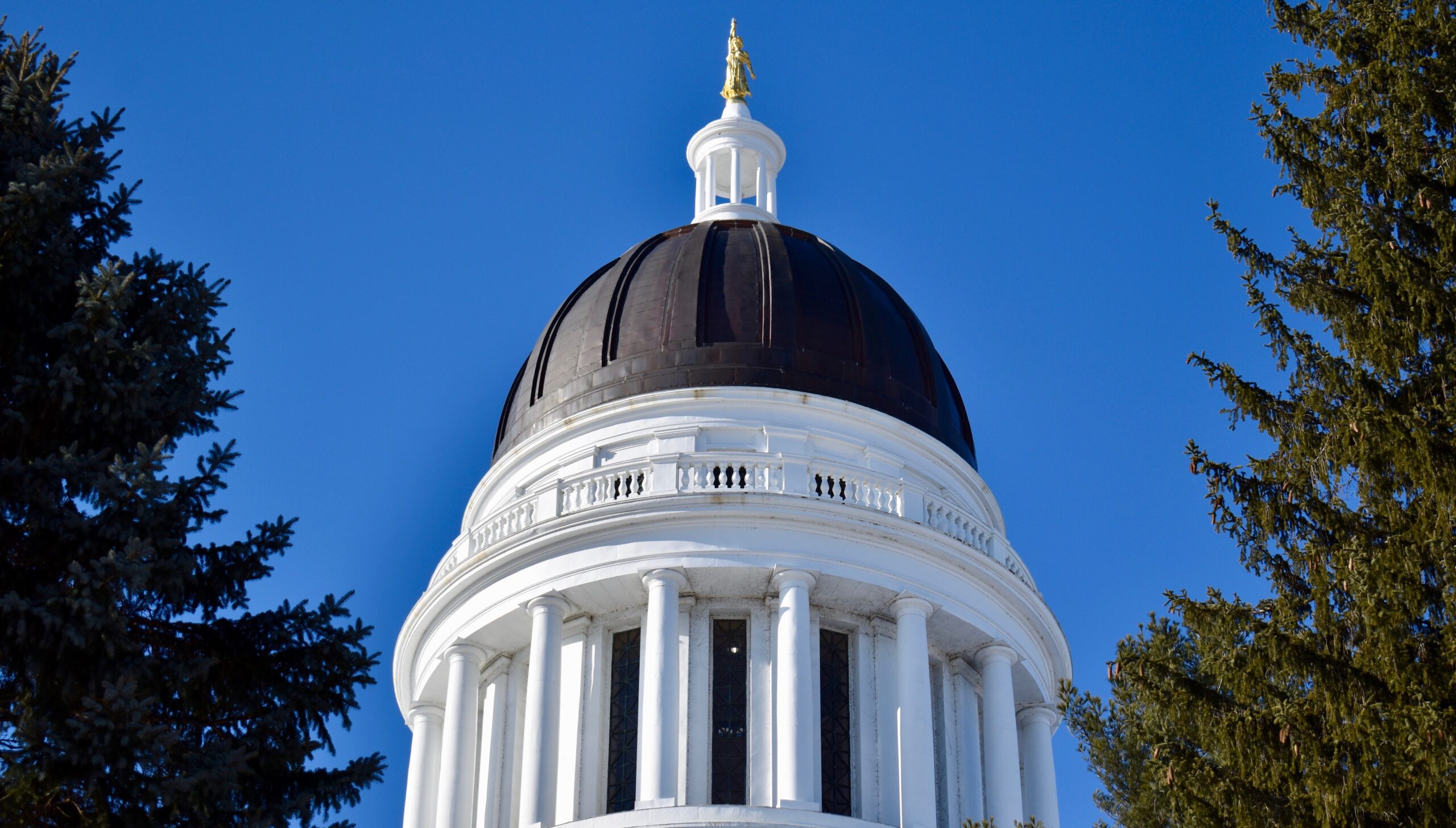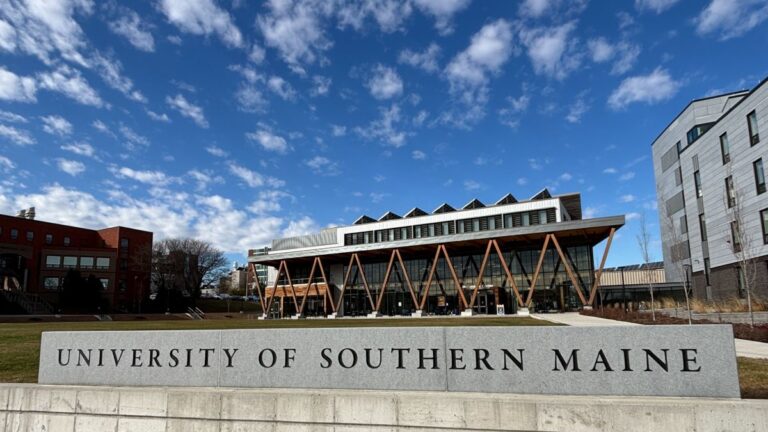Editor’s Note: The following story first appeared in The Maine Monitor’s free environmental newsletter, Climate Monitor, that is delivered to inboxes for free every Friday morning. Receive the newsletter so you can read stories like this sooner by registering here.
Yes, the legislative session ended awhile ago, and perhaps you’ve all moved on and are already looking ahead to November elections and next session.
We at The Monitor are still wading through the 969 bills (!!) that became law last session, and thought this would be a good time, now that the dust has settled, to highlight a few you may have missed. (That figure doesn’t include the 27 bills that were vetoed, by the way.)
Because my attempts to plod through all 996 pieces of legislation failed miserably (I never did master those speed reading techniques my dad tried to teach me), I turned instead to Kathleen Meil, director of policy & partnerships at Maine Conservation Voters, to get her take on some of the legislation they were watching this year.
There were a number of significant bills that passed, including those aimed at limiting the spread of PFAS and improving grid planning. But those got a lot of press, so I thought I’d ask Meil about some of the legislation we didn’t hear as much about. Here are some highlights from what we discussed:
LD 489: Resolution, Proposing an Amendment to the Constitution of Maine To Establish a Right to a Healthy Environment
This bill, which ultimately did not pass, was a proposal for a constitutional amendment that would have enshrined a right to a “clean and healthy environment and to the preservation of the natural, cultural and healthful qualities of the environment.”
It required the state to “conserve, protect and maintain the State’s natural resources, including, but not limited to, its air, water, land and ecosystems for the benefit of all the people, including generations yet to come.”
Even though it failed to garner the necessary 2/3 support from the House, this bill is worth noting because it’s emblematic of a growing movement around the world seeking to codify the right to a clean and healthy environment in law. At least six states, including New York, Montana, Pennsylvania, Illinois, Massachusetts and Hawaii, have such protections, and advocates say it’s likely this will return in Maine in the near future.
Pennsylvania adopted a constitutional Environmental Rights Amendment similar to that being proposed in Maine way back in 1971. “They then used that constitutional right as the basis for legal action when clean water, air, healthy environment was being violated,” said Meil.
Many who opposed the Maine bill, however, worried about a cascade of unintended consequences, given the proposal’s broad language. Would it prevent housing from being built? Wastewater infrastructure? Renewable energy projects?
Commissioner Melanie Loyzim of the Maine Department of Environmental Protection called the bill’s language “extreme,” with “enormous” potential ramifications for state agencies.
Loyzim offered a hypothetical: if the Department requires homeowners to treat wastewater discharge at a level of 99% control effectiveness for hormones before allowing it to be discharged into groundwater (like a home septic system), another resident using that same aquifer or bedrock fracture could claim the agency violated their constitutional right to clean groundwater through inaction.
How the courts would treat claims like this is anyone’s guess, said Loyzim, but they must be considered.
The 39 members that make up the Environmental Priorities Coalition supported the bill, but Meil acknowledged there were a lot of unanswered questions.
“I do think we have a responsibility to ask how could this be used in a way that’s counter to our goals. There are a ton of tensions we’re going to be navigating for quite some time about what a climate resilient future looks like,” she said, adding that this is likely not the last we’ll see of bills like this.
“There will continue to be conflicts between conservation and clean energy,” said Meil. “It’s going to be a wild ride.”
LD 736: An Act To Enhance the Ecological Reserve System
Speaking of conservation: this bill, which did pass, was an attempt to allow the Bureau of Parks and Lands to acquire additional parcels as Ecological Reserves, a designation enabled by the Legislature in 2000. These reserves are public lands set aside to serve as benchmarks against which biological and environmental change can be measured.
The final law raised the cap on total land acreage that can be designated as Ecological Reserve from 100,000 to 115,000 acres, put in place rules for removing more than 10 acres from the reserve designation, and added language allowing tribal members to gather materials on Ecological Reserve land that will be used for cultural or traditional activities.
The Maine Bureau of Parks and Lands manages 96,000 acres of Ecological Reserves, ranging in size from 775 acres at Wassataquoik Stream in T3 R7 WELS to more than 11,000 acres at Nahmakanta in Rainbow Township. Parts of the Cutler Coast are designated as reserves. That sounds like a lot, but Ecological Reserves cover less than 1% of the state.
They’re places for scientific monitoring, education and research, as well as some low-impact recreation, like hiking, hunting, fishing, cross-country skiing and primitive camping. Timber harvesting isn’t allowed, giving trees a chance to grow big and old, and giving us a chance to see what happens when we don’t interfere with a landscape.
“Most of the gaps [in conservation] are in southern Maine,” said Meil. “There’s a great opportunity to conserve more land in the places that the most people in Maine live.”
LD 1964: An Act To Update Certain Water Quality Standards and To Reclassify Certain Waters of the State
This upgraded the water classifications for more than 800 miles of rivers and streams, recognized water bodies within the Katahdin Woods and Waters National Monument as outstanding national resource waters, and updated the pH range for healthy waters, which Jeff Reardon of Trout Unlimited testified “responds to guidance from the US [Environmental Protection Agency] and reflects growing understanding of the lingering and ongoing impacts of acid rain in some Maine streams.” Advocates say it will also protect habitat important for the recovery of Atlantic salmon.
Maine’s water classification system is above and beyond the minimum fishable-swimmable standards established in the federal Clean Water Act, which was signed into law 50 years ago this October (championed by Maine’s own Senator Edmund Muskie).
The system has eight classifications: four for freshwater rivers (AA, A, B, C), three for marine and estuarine waters (SA, SB, SC), and one for lakes and ponds (GPA). The Maine Department of Environmental Protection describes the system as “as a hierarchy of risk, more than one of use or quality.”
The quality of the water is actually not that much different between the water bodies, according to the Department. But lower classification water bodies are exposed to more risk, “the risk being the possibility of a breakdown of the ecosystem and loss of use due to either natural or human-caused events.” Activities that could potentially alter the ecosystem (damming, waste discharge) are allowed only in lower classification water bodies. There is little risk in class AA rivers, for instance, because that classification doesn’t allow for those activities.
This law was the culmination of a three-year review process by the Department and now goes to the federal Environmental Protection Agency for approval.
“It’s an acknowledgement that that body of water is cleaner than it was three years ago and must be protected,” said Meil. During testimony on the bill, she added, several lawmakers recalled that many of these water bodies were once so polluted “You couldn’t go to these rivers, you couldn’t fish in these rivers, you couldn’t swim in these rivers. This is the feel-good story of the session.”
LD 1979: An Act Regarding the Development of Comprehensive River Resource Management Plans
The 39 members that make up the Environmental Priorities Coalition did not support the early version of this bill, said Meil.
The first draft, which Meil said was developed with extensive input from Brookfield Renewable, a Canadian conglomerate that owns a number of hydroelectric facilities in Maine, added language that would have required state agencies to consider “existing uses” when developing comprehensive river resource management plans on watersheds that have a licensed hydropower project.
“The original bill was designed to privilege the interests of the dam owners over to science and river restoration efforts,” said Meil.
The law ultimately did not include the “existing uses” but did add language stating that comprehensive river resource management plans are a “major substantive rule,” which requires them to be presented to the Legislature before they can take effect. It also requires the Department “to look at how are we thinking about river resource management,” said Meil. “Do we need a better or different process?”
We won’t get into the weeds on all of the laws that passed this session, because it’s likely you’ve heard quite a bit about them at this point. But many were significant, including:
• a law that prohibits the spreading of sludge and sludge-based compost
• $60 million for farmers impacted by PFAS contamination
• a law implementing agency recommendations related to sea level rise and climate resilience
• a pilot program focused on climate education in Maine schools
• the establishment of the Maine Climate Corps
• a law closing a loophole allowing out-of-state waste into state-owned landfills
• a law that will change the way utility companies plan grid upgrades.
“We’ve really been sort of expanding and revisioning what it means to have a healthy environment,” said Meil, adding that the organization also supported legislation related to environmental justice and access to clean drinking water for Passamaquoddy tribal members living at Pleasant Point. “We’re really thinking about healthy environments in a new way.”
To read the full edition of this newsletter, see Climate Monitor: the environmental legislative roundup you haven’t read.








